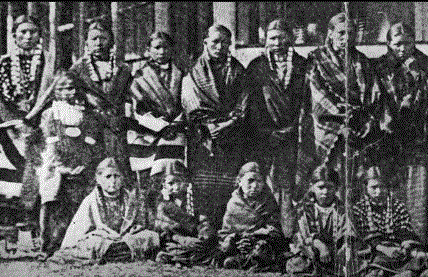Boarding School and Land Allotment Eras 1879-1933
1879
Boarding School policy instated, removing Native children from their communities to “kill the Indian, save the man”

The U.S. government launches a policy of forcibly removing Native children from their families and tribal communities and placing them in residential boarding schools far from their homelands and cultural contacts. These militaristic schools expressly forbid children from contacting their relatives and force the adoption of Christianity, English language, and Euro-American customs, values, and practices. The goal of the boarding schools is complete eradication of Native identity, culture, and values and complete adoption of White/Euro-American, Christian, and heteropatriarchal values. Capt. Richard H. Pratt establishes the primary model for all off-reservation boarding schools with the Carlisle Indian School in Pennsylvania. Pratt’s motto is “Kill the Indian, save the man,” and this encompasses eradicating any signs of Native life and practices, including cutting hair and braids of Indian children, forbidding Indian languages or customs, forcing Christianity and Christian dogma and practices, and forbidding hugging, even among siblings. Children are required to wear militaristic-style uniforms and adopt new English-language names and surnames. In many of the boarding schools, children are severely punished or tortured if caught violating any of the cultural rules and, in some cases, murdered. Parents who refuse to send their children are imprisoned. By 1880, there are more than 7,000 Indian children enrolled in federally supported missionary-run boarding schools (Lomawaima & Ostler, 2018).